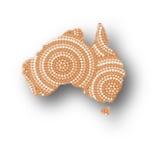Embedding First Nations Pedagogy
 “We today take this first step by acknowledging the past and laying claim to a future that embraces all Australians. A future where we harness the determination of all Australians, Indigenous and non-Indigenous, to close the gap that lies between us in life expectancy, educational achievement and economic opportunity.” from the Prime Minister Motion of Apology to Australia Indigenous Peoples, House of Representatives, 13 February 2008
“We today take this first step by acknowledging the past and laying claim to a future that embraces all Australians. A future where we harness the determination of all Australians, Indigenous and non-Indigenous, to close the gap that lies between us in life expectancy, educational achievement and economic opportunity.” from the Prime Minister Motion of Apology to Australia Indigenous Peoples, House of Representatives, 13 February 2008
The Portfolio of Resources interactive blog offers the exemplary teacher, a few approaches to be utilised within the early adolescent classroom, incorporating culturally diverse Australian Indigenous inclusive pedagogy, conducive to participation by Aboriginal students. Multi-literate and differentiated exemplary teachers apply the Competency Framework for Teachers Standards dimensions and phases, utilising strategies to include Australia’s Indigenous perspective within the learning community.
If you have any resources that you have links to or apps that you have found useful within the blended and differentiated learning field please feel free to post them on this BLOG page below. Thank you.
References
Anstey, B., & Bull, G. (Eds.) (1996). The literacy labyrinth. Sydney: Prentice Hall.
Australian Bureau of Statistics (2009) Schools Australia, 2008 (cat. no. 4221.0).
Bitter, G.G. & Pierson, M.E. (2005). Using Technology in the Classroom (6th Ed.). Boston:Pearson Education.
Bullock, Ann Adams & Parmalee P. Hawk. (2010). Developing a teaching portfolio. (3rd ed.) Sydney: Pearson.
Campbell, Dorothy M. et al (2011). How to develop a professional portfolio. (5th ed) Sydney: Pearson
Colbeck, C.l L., Campbell, S.E & Bjorklund.S. A. (2000). Grouping in the dark: What College students learn from group projects. The Journal of Higher Education 71(1):60-83.
Comber, B. & Kamler, B. (2005). Turn-around pedagogies: literacy interventions for at-risk students. PETA.
Cope, B. & Kalantzis, M. (Eds). (2000). Multiliteracies: literacy learning and the design of social futures. London: Routledge.
Covey, Stephen R. (1989). The 7 habits of highly effective people. New York: Simon $ Schuster.
Curriculum Council of Western Australia. (1998). Curriculum Framework for Kindergarten to Year 12 Education in Western Australia. Perth: Curriculum Council of Western Australia.
Hedberg, J.G. (Ed.)(2001). Online Learning Environments: Research and Teaching (pp. 45-68). Wollongong: Faculty of Education, University of Wollongong.
Jewitt, C. & Kress, G. (2003). Multimodal literacy. London: Peter Lang.
Johnston, C. G., James, R.H. Lye, J.N. &. McDonald, I.M. .(2000). An evaluation of collaborative problem solving for learning economics.” Journal of Economic Education 31(1):13-29.
Knapp, P. & Watkins, M. (2005). Genre, text, grammar: technologies for teaching and assessing writing. UNSW Press.
Kress, G. (2003). Literacy in the new media age. London: Routledge.
Kroll, Linda R. et.al. (2005). Teaching as principled practice: Managing complexity for social justice. London: SAGE Publications
Lankshear, C., et al. (2000). Teachers and technoliteracy: managing literacy, technology and learning in schools. Sydney: Allen & Unwin.
Morrison, G.R. & Lowther, D.L. (2004). Integrating Computer Technology Into the Classroom (3rd ed.). New Jersey: Pearson Education.
Newhouse, P. (2005). Teachers use computers in the 21st Century. Revised Edition. Willetton, WA: Specialist Educational Services.
Online collaborative learning. Retrieved October 25, 2005, from the Central Queensland
University Web site:http://clp.cqu.edu.au/introduction.htm
Roblyer, M. D. (2004). Integrating Educational Technology into Teaching (3rd ed.). Sydney: Prentice-Hall.
Rush, LS, Eakle, J & Berger, A. (Eds). (2007). Secondary school literacy: what research reveals for classroom practice. NCTE: Urbana Illinois.
Snyder, I. (Ed.). 1997. Page to screen: taking literacy into the electronic era. Sydney: Allen & Unwin.
Trinidad, S. & Pearson, J. (2005). Using Information and Communication Technologies in Education. Singapore: Pearson Education South Asia.
The London Group
http://wwwstatic.kern.org/filer/blogWrite44ManilaWebsite/paul/articles/A_Pedagogy_of_Multiliteracies_Designing_Social_Futures.htm